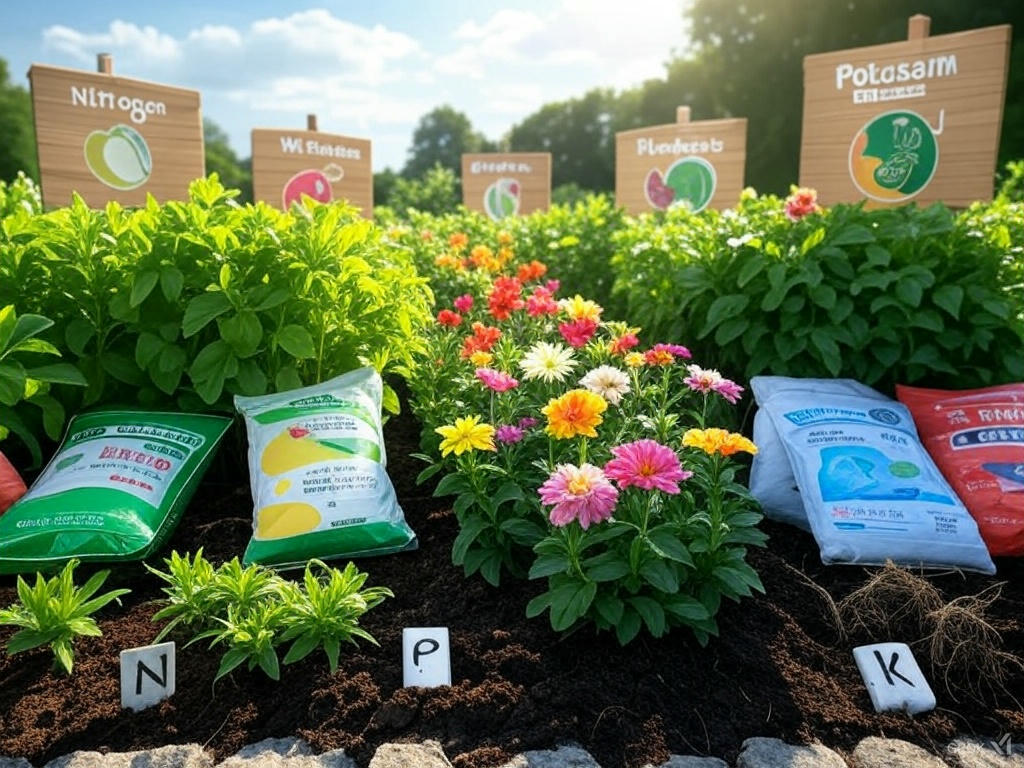Fertilizing your plants is essential for their health and growth, but choosing the right fertilizer can sometimes feel overwhelming. With so many options available, it’s important to understand the basics of fertilizers to make the best choice for your plants. Here’s a simple guide to help you pick the right fertilizer and give your plants the nutrients they need to thrive.
Understanding Fertilizer Labels
Fertilizers are often labeled with three key numbers that represent the NPK ratio: Nitrogen (N), Phosphorus (P), and Potassium (K). These nutrients are essential for plant growth, and the numbers on the label show the percentage of each nutrient in the product. Here’s what each one does:
- Nitrogen (N): Helps plants grow lush and green by promoting leaf and stem development. It’s particularly important for leafy vegetables and grass.
- Phosphorus (P): Supports root development, flowering, and fruiting. It’s crucial for plants that produce flowers or fruits, like tomatoes and peppers.
- Potassium (K): Strengthens plants, helping them resist diseases, improve drought tolerance, and build strong cell walls. It’s important for overall plant health.
For example, a fertilizer with an NPK ratio of 10-10-10 contains 10% nitrogen, 10% phosphorus, and 10% potassium.
Types of Fertilizers
- Granular Fertilizers
These are solid fertilizers that need to be applied to the soil. Granular fertilizers can be slow-release or fast-release, meaning they either provide nutrients over time or immediately boost plant growth. They are great for outdoor plants and larger gardens. - Liquid Fertilizers
Liquid fertilizers are mixed with water and applied directly to the soil or sprayed onto the leaves. They are absorbed quickly, making them great for fast-acting results, but they may need to be applied more frequently. - Organic Fertilizers
Made from natural sources like compost, manure, or plant matter, organic fertilizers are gentle on plants and improve soil health over time. They are ideal for organic gardening and provide slow, steady nutrition. - Synthetic Fertilizers
These are chemically manufactured and provide immediate nutrition to plants. While they can be very effective, synthetic fertilizers may sometimes lead to nutrient imbalances in the soil if overused.
How to Choose the Right Fertilizer
- Know Your Plant’s Needs
Different plants require different nutrients. For example, leafy greens like lettuce and spinach benefit from a fertilizer higher in nitrogen, while flowering plants or fruiting vegetables need more phosphorus to encourage blooms and fruit. Choose a fertilizer based on the needs of your plants. - Consider the Soil
Test your soil to check for existing nutrient levels. If your soil is rich in one nutrient but lacking in others, select a fertilizer with a higher percentage of the missing nutrient. For example, if your soil has plenty of nitrogen but lacks phosphorus, choose a fertilizer with a higher phosphorus ratio. - Time of Year
The time of year can affect the type of fertilizer you choose. In the spring and summer, when plants are actively growing, use fertilizers with higher nitrogen content. In fall or when preparing plants for the winter, use a balanced or higher potassium fertilizer to strengthen roots and help plants resist cold stress. - Slow-Release vs. Fast-Release
Slow-release fertilizers are ideal for plants that don’t need a lot of immediate nutrients. These are great for long-term plant health, as they provide a steady flow of nutrients over time. Fast-release fertilizers work quickly, making them good for quick growth spurts, such as when transplanting young seedlings or preparing for a harvest. - Water-Soluble vs. Granular
Water-soluble fertilizers are easy to apply and are often absorbed quickly by the plant. They are perfect for plants that need an instant nutrient boost. Granular fertilizers, on the other hand, break down slowly, making them better for long-term feeding.
Applying Fertilizer
- Follow the Instructions
Whether using liquid or granular fertilizer, always follow the instructions on the packaging to avoid over-fertilizing. Too much fertilizer can damage plants, burn the roots, or cause excessive growth that weakens the plant. - Fertilize During the Growing Season
Most plants need fertilizing during their growing season, usually spring and summer. Avoid fertilizing during dormant periods (like winter), as plants won’t absorb nutrients effectively. - Water After Fertilizing
After applying fertilizer, water your plants well. This helps the nutrients dissolve and get into the root zone, where the plant can absorb them.
Final Tip
Remember, plants can’t thrive on fertilizer alone. Healthy soil, proper watering, and good sunlight are essential for plant growth. Fertilizer is just one piece of the puzzle! By understanding your plants’ needs and applying the right fertilizer, you’ll help them grow strong, healthy, and beautiful.

Leave a Reply